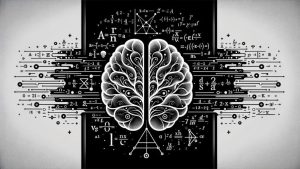The rapid advancement of artificial intelligence (AI) has transformed various sectors, and education is no exception. One of the most promising applications of AI in education is Math GPT, a powerful tool designed to assist students, educators, and professionals in tackling complex mathematical problems. This article delves into what Math GPT is, how it works, its benefits, and its potential to redefine the way mathematics is taught and learned.
What is Math GPT?
Math GPT is an AI-based system that utilizes advanced natural language processing (NLP) and machine learning algorithms to understand and solve mathematical problems. “GPT” stands for Generative Pre-trained Transformer, a deep learning model developed by OpenAI. While traditional GPT models like ChatGPT are geared toward general conversational tasks, Math GPT focuses on understanding, solving, and explaining mathematical queries.
The tool can handle a wide range of mathematical topics, from basic arithmetic and algebra to advanced calculus and differential equations. It is designed to assist students in learning mathematical concepts, provide step-by-step solutions, and even generate new problems for practice. By leveraging the power of AI, Math GPT aims to make mathematics more accessible, engaging, and personalized.

How Does Math GPT Work?
Math GPT is built on the foundation of the Transformer architecture, which excels in processing sequential data such as text. When a user inputs a mathematical problem, the AI breaks down the problem into its fundamental components and utilizes its pre-trained knowledge to generate a solution. Here’s a step-by-step breakdown of how Math GPT typically works:
- Input Analysis: The first step involves parsing and understanding the user’s query. Math GPT is designed to comprehend natural language inputs, such as “Solve the equation 2x + 5 = 15,” as well as more complex mathematical expressions written in LaTeX or other notation systems.
- Problem Solving: Once the problem is parsed, Math GPT utilizes its vast knowledge base to identify the appropriate method to solve the problem. Depending on the query, it may use algebraic manipulation, calculus rules, trigonometric identities, or statistical formulas.
- Step-by-Step Explanation: One of the most valuable features of Math GPT is its ability to provide detailed, step-by-step explanations. Unlike simple calculators that provide just the answer, Math GPT breaks down the solution process, making it easier for students to understand the logic behind each step.
- Verification and Error Checking: After deriving a solution, the AI performs a verification step to ensure the accuracy of its results. This is particularly important for complex problems where multiple approaches may yield different answers.
- Output Generation: Finally, Math GPT generates the solution along with any relevant explanations, diagrams, or graphs, depending on the complexity of the problem. Users can ask follow-up questions or request alternative methods to gain a deeper understanding.
Key Features of Math GPT
Math GPT stands out from traditional math tools due to its unique features, which cater to various learning and problem-solving needs:
- Natural Language Understanding: Math GPT allows users to input problems in natural language, making it accessible to students who may not be familiar with mathematical notation. For instance, a user can type, “What is the derivative of x^3?” instead of needing to format it in a specific way.
- Multi-Topic Support: The tool covers a broad spectrum of mathematical topics, including:
- Arithmetic and Algebra
- Geometry and Trigonometry
- Calculus and Differential Equations
- Probability and Statistics
- Linear Algebra and Discrete Mathematics This versatility makes it suitable for a wide range of users, from high school students to university scholars.
- Visual Aids: Math GPT can generate graphs, charts, and geometric diagrams to complement its solutions, providing a visual representation of the problem. This is especially useful for geometry and calculus problems, where visual understanding is crucial.
- Interactive Learning: Users can interact with the AI by asking follow-up questions, requesting more detailed explanations, or exploring alternative solution methods. This interactive approach fosters a deeper understanding of the material.
- Practice Problem Generation: Math GPT can create customized practice problems based on the user’s current learning level. This feature allows students to test their knowledge and reinforce their understanding of specific topics.
Benefits of Math GPT in Education
Math GPT offers numerous benefits that make it an invaluable tool for students, educators, and institutions:
- Personalized Learning Experience: Math GPT tailors its explanations and problem-solving strategies based on the user’s input and feedback. This personalized approach helps students learn at their own pace, focusing on areas where they need the most support.
- Enhanced Understanding: The AI’s ability to break down complex problems into simple, understandable steps ensures that students not only get the right answer but also grasp the underlying concepts. This is crucial for building a strong mathematical foundation.
- 24/7 Availability: Unlike human tutors, Math GPT is available around the clock, providing instant assistance whenever a student encounters a challenging problem. This constant accessibility can be a game-changer for students who study at unconventional hours.
- Reduced Math Anxiety: Many students struggle with math anxiety, which can hinder their ability to learn effectively. Math GPT provides a judgment-free environment where students can experiment, ask questions, and learn without fear of making mistakes.
- Resource for Educators: Teachers can use Math GPT as a supplementary teaching tool. It can generate problem sets, provide alternative explanations, and even suggest different teaching approaches for complex topics.
Challenges and Limitations
Despite its potential, Math GPT is not without its challenges:
- Contextual Understanding: While Math GPT excels at solving specific problems, it may struggle with ambiguous or poorly defined inputs. Users need to ensure their queries are clear and well-structured for the best results.
- Dependence on Training Data: The effectiveness of Math GPT depends heavily on the quality and diversity of the data it was trained on. For highly specialized topics or unconventional problems, the AI may produce incorrect or incomplete solutions.
- Lack of Human Intuition: While Math GPT can mimic human problem-solving to an extent, it lacks the intuition and creativity of a skilled educator. This means it may not always identify the most intuitive or elegant solution for a given problem.
- Potential for Misuse: There is a risk that students may rely too heavily on Math GPT for answers rather than using it as a learning tool. Educators must emphasize the importance of understanding the solution process, not just obtaining the answer.
The Future of Math GPT
The future of Math GPT and similar AI-powered tools is promising. As AI technology continues to evolve, we can expect even more sophisticated capabilities, such as real-time feedback, deeper contextual understanding, and improved visualizations. Additionally, integrating Math GPT into digital classrooms could revolutionize how mathematics is taught and learned, providing a more interactive, engaging, and personalized experience for students worldwide.
Conclusion
Math GPT is a groundbreaking tool that has the potential to reshape the landscape of mathematics education. By providing instant, personalized assistance and making complex concepts accessible, it empowers students to overcome their struggles and develop a deeper appreciation for the subject. While challenges remain, the benefits of Math GPT far outweigh its limitations, making it a valuable resource for students and educators alike.
As AI continues to develop, the role of tools like Math GPT will only become more significant, paving the way for a future where learning mathematics is not just easier but also more enjoyable.

